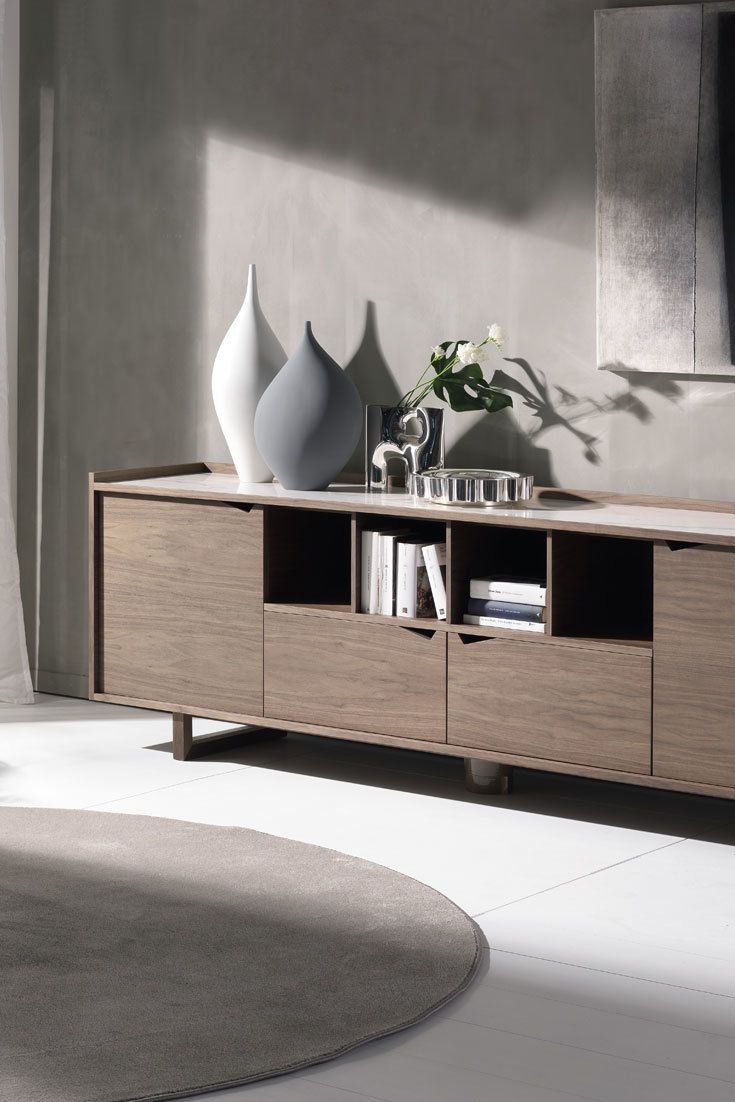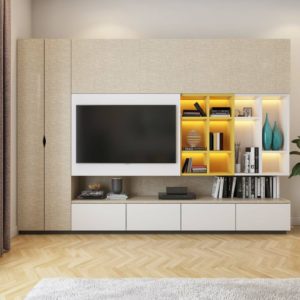
How to Buy TV Cabinets: Expert Tips and Considerations
Buy TV Cabinet: Art of Making the Ideal Choice
Choosing the right TV unit isn’t just a fleeting thought. It’s about merging functionality with style.
In today’s age, where sleek TVs reign, the right wooden TV unit or modern TV unit is crucial. It houses your TV and amplifies room aesthetics. From a corner TV cabinet to a floating TV unit, options abound. But how do you pick? Whether you’re eyeing a timber TV unit or an oak TV unit, this guide provides insights to make your selection stellar. Buy TV cabinets that elevate your space!

Understanding Your Needs Before You Buy TV Cabinets
Before diving into the vast world of TV cabinets, it’s paramount to first understand your specific needs. This initial step will guide your decision-making process, ensuring you select a piece that harmonises with your living space and complements your viewing habits.
- Space Assessment: Begin by measuring the available space where you intend to place the TV cabinet. Consider the width, depth, and height. This ensures you buy a cabinet that fits perfectly without overwhelming the room or being too diminutive.
- TV Size and Weight: The size of your television plays a crucial role in the choice of a cabinet. A larger TV requires a sturdier and wider cabinet. Always check the maximum weight the cabinet can handle to avoid any potential mishaps.
- Storage Needs: Do you have auxiliary devices like gaming consoles, DVD players, or sound systems? If so, you’ll need a cabinet with ample storage compartments to accommodate these items. Think about the number of shelves, drawers, or cabinets you might require.
- Ventilation: Electronic devices can generate heat, especially when used for extended periods. Ensure that the cabinet you choose has proper ventilation to prevent overheating.
- Cable Management: With numerous devices come multiple cables. A good TV cabinet should offer cable management solutions to keep your space tidy and free from tangled wires.
- Aesthetic Preferences: Beyond functionality, consider the design, colour, and material of the cabinet. Your TV cabinet should not only be functional but also match your home’s decor and personal style.
Different Types of TV Cabinets
Traditional TV Cabinets:
These cabinets exude classic charm. Often crafted from wood, they boast intricate designs, and carved details, and sometimes come with ornate hardware. The materials typically include oak, cherry, or mahogany, amongst others. These cabinets shine in settings where antiques, rich fabrics, and detailed artwork dominate.

Modern TV Stands:
For those leaning towards a more contemporary setting, modern TV stands are the go-to. Characterised by their streamlined designs and lack of fuss, they often incorporate materials like metal, tempered glass, or even acrylic. With a focus on simplicity, these stands complement homes with modern art, clean lines, and a monochromatic colour palette.

Wall-Mounted Units:
An increasingly popular choice, wall-mounted units offer a sleek look and help save floor space. Ideal for homes with limited space or those aiming for a minimalist look, these units come with the added benefit of making the room look more spacious. However, it’s crucial to ensure that the wall can support the unit’s weight and the TV.

Corner TV Stands:
Efficient and smart, corner TV stands are designed specifically to fit into corners, utilising space that might otherwise go wasted. They’re especially useful in smaller rooms or apartments where maximising space is paramount. Their unique design often incorporates storage solutions beneath the TV space, allowing for a neat arrangement of other media equipment or accessories.

Lift Cabinets:
For those who prefer a discreet look, lift cabinets are a gem. At the push of a button, these cabinets can lift your TV into view or hide it completely. Made primarily of wood, they look like traditional cabinets when the TV is concealed. They’re best suited for homes where the TV isn’t the primary focus of the room, such as formal living rooms or bedrooms.

Choosing the Right Material for your TV Cabinet
Wooden TV Cabinets:
One of the most traditional and versatile materials, wood offers a range of styles and finishes. From hardwoods like oak, mahogany, and walnut to softwoods like pine, each type has its characteristics. Hardwoods are typically more durable and have a rich, deep finish, making them a premium choice. Softwoods, on the other hand, might be lighter in colour and weight. The finish can vary from glossy to matte, and some even come with distressing for a rustic feel. When choosing a wooden TV cabinet, consider the room’s existing furniture and colour palette.

Metal TV Cabinets:
Metal TV cabinets embody a sleek and modern design. They are known for their durability, ensuring longevity even with heavy use. Often, they feature minimalist designs with clean lines, making them ideal for contemporary or industrial-themed rooms. Available in a variety of finishes, from matte black to shiny chrome, metal cabinets can easily match other decor elements in the room.

Glass TV Cabinets:
Glass TV stands exude elegance and can instantly make a room feel more open and airy. Typically, these are made with tempered glass, ensuring durability and safety. While they are a beautiful addition, they might require regular cleaning to maintain their pristine look, especially if you’re concerned about fingerprints or smudges. When pairing with other furniture, consider other glass elements in the room, or contrast it with metal or wood for a balanced look.

Mixed Material TV Cabinets:
For those seeking a unique and contemporary style, cabinets combining wood, metal, and glass offer a harmonious blend. These units often feature wooden frames with metal accents and glass shelves or doors. This mix provides both functionality and a modern aesthetic, making them suitable for rooms that have a blend of traditional and contemporary design elements.

Functionality vs. Aesthetics
When you’re looking to buy TV cabinets, striking a balance between functionality and aesthetics is crucial. While a visually stunning design can elevate the ambience of your room, it’s equally essential that the cabinet serves its primary purpose effectively.
The Balance Between Design and Practical Use
Every homeowner dreams of a TV cabinet that complements the room while offering optimum utility. The key lies in identifying your needs and ensuring the chosen design aligns with them. For instance, a family with kids might prioritise storage space for gaming consoles and accessories, while a minimalist might seek a more streamlined design.
Ensuring Cable Management Solutions
One significant aspect of functionality is managing the maze of cables that come with TVs, sound systems, and other electronic devices. A well-designed TV cabinet will offer discreet cable management solutions, ensuring your living space remains tidy and clutter-free.
Adjustable Shelving and Modular Designs
The world of entertainment is ever-evolving. Today’s DVD player might be replaced by tomorrow’s latest gaming console. Adjustable shelves and modular designs ensure your TV cabinet can adapt to these changes. This adaptability not only enhances functionality but also ensures longevity in your investment.

Incorporating Your TV Cabinet into the Room’s Design
Integrating your TV cabinet seamlessly into your room’s design can transform the way you experience your entertainment system.
Complementing Wall Colours and Textures
When you place your TV cabinet against a wall, the colours and textures must complement each other. For a wooden cabinet, consider walls with softer hues or textured wallpapers that create a cosy atmosphere. For more modern metal or glass designs, bold colours or simplistic wall designs might be more appropriate.
Creating a Focal Point with the TV and its Cabinet
The TV is often the room’s main attraction, especially in living or family rooms. Positioning the TV and its cabinet as the room’s focal point ensures that seating arrangements and other furniture elements complement this setup. This not only enhances the viewing experience but also brings cohesion to the room’s design.
Enhancing with Lighting: Backlights, Under Cabinet Lights
Lighting plays a subtle yet transformative role in enhancing your TV and cabinet’s presence. Consider using backlights behind the TV for a cinematic effect or under cabinet lights to highlight unique design features. Proper lighting can set the mood for movie nights and add a touch of luxury to your setup.

Concluding Your Journey to Buy TV Cabinets
Embarking on the journey to find the ideal TV unit means wadding through a plethora of designs, materials, and features. While the allure of an oak TV unit or a black TV unit might tempt you, remember it’s about more than looks.
Reflecting on our exploration, we understood individual preferences, delved into diverse TV cabinet types, and highlighted unique material impacts on room ambience. From small TV cabinets to long TV units, we emphasised the blend of design and utility. Think cable management, adjustable shelving, and the subtle power of lighting in a TV stand.
As you set out to select your TV stand or entertainment unit, bear these insights in mind. Seek a style echoing your taste, but don’t forsake functionality. A well-picked TV table not only fits your decor but also amplifies your entertainment joy.
By blending discernment with design appreciation, you’ll buy TV cabinets that meld elegance with function, boosting room appeal and your viewing delight.

Frequently Asked Questions
Yes, they can be called entertainment centres, media consoles, or TV consoles, depending on design and functionality.
No, while many TV stands are designed to fit a range of TV sizes, always check the stand’s weight capacity and the mounting specifications if it comes with a bracket.
Yes, a 55-inch TV typically has a width of around 48 to 50 inches, so it should fit comfortably on a 120cm (approximately 47 inches) stand. However, always check the TV’s stand or base dimensions to ensure stability.
If it’s designed to hold a TV and is properly installed with the right fixtures, yes. Always check the unit’s weight capacity and secure it to wall studs.
For a 65-inch TV, consider a stand that’s at least 57 inches wide to ensure stability. Factor in any extra space you might want on the sides for aesthetics or additional devices. Additionally, check the TV’s base or stand measurements if not wall-mounting to ensure it fits comfortably on the cabinet’s surface.

